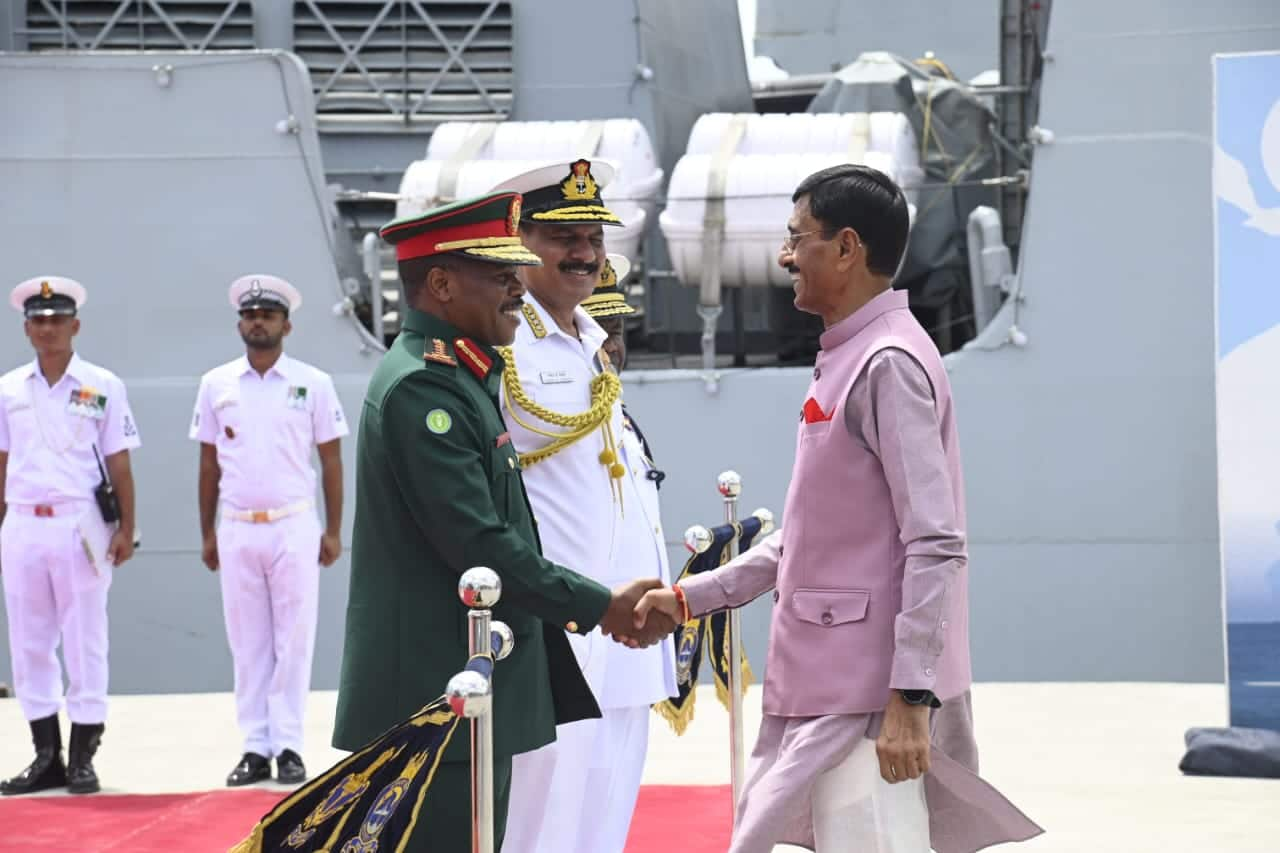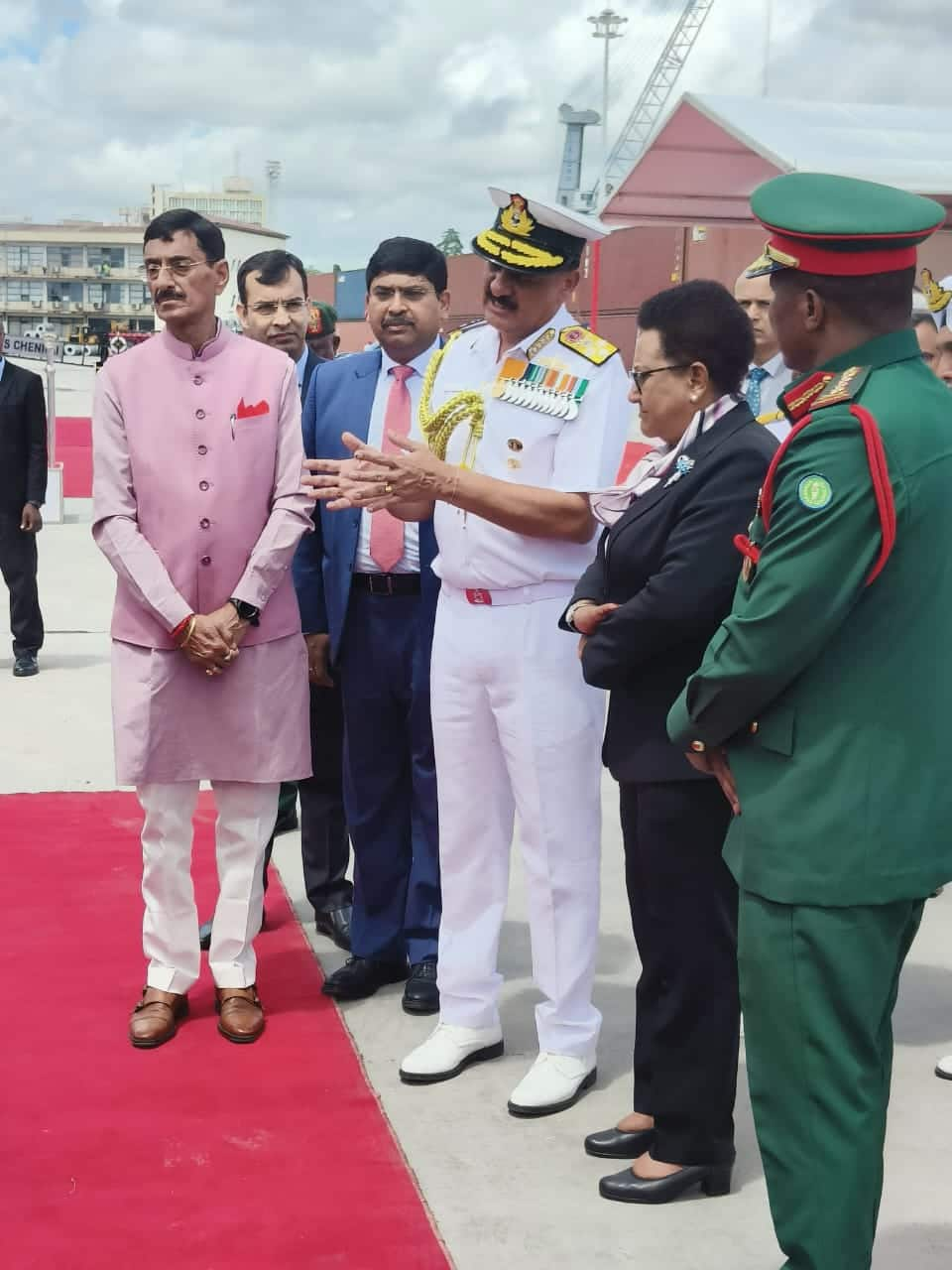New Delhi: On March 12, 2015, Prime Minister Narendra Modi unveiled a bold maritime strategy, termed 'SAGAR' (Security and Growth for All in the Region), during his historic visit to Mauritius. SAGAR marked a pivotal shift for India from a primarily continental security approach towards active maritime diplomacy aimed at building regional trust, strengthening maritime security, and fostering greater cooperation across the Indian Ocean Region (IOR).
Exactly a decade later, returning to Mauritius in March 2025 as Chief Guest for its National Day celebrations, Modi significantly widened this maritime vision, announcing 'MAHASAGAR' — 'Mutual and Holistic Advancement for Security and Growth Across Regions.'
MAHASAGAR indicates India's strategic intent to expand beyond traditional maritime neighbourhoods to embrace broader geopolitical interests in the Indo-Pacific, aligning with the dynamic security environment shaped by increasing Chinese assertiveness and emerging non-traditional threats.
Deepening Indo-African Maritime Ties: AIKEYME 2025Reflecting this broadened strategic ambition, the Indian Navy, in collaboration with Tanzania, is spearheading the inaugural Africa-India Key Maritime Engagement (AIKEYME), underway from April 13 — 18, 2025 at Dar-es-Salaam.
AIKEYME, translating to 'Unity' in Sanskrit, involves eight African nations including Kenya, Mozambique, Seychelles, and South Africa.
The exercise highlights India's shift from bilateral to expansive multilateral maritime diplomacy.

AIKEYME comprises comprehensive anti-piracy operations, Visit Board Search and Seizure (VBSS) drills, and exercises aimed at enhancing operational interoperability among participating navies.
Speaking at the launch ceremony onboard INS Chennai, India's Minister of State for Defence, Sanjay Seth, articulated the essence of MAHASAGAR, quoting an African proverb: "If you want to go fast, go alone; if you want to go far, go together."
His Tanzanian counterpart, Defence Minister Dr. Stergomena Lawrence Tax, echoed these sentiments, highlighting collective maritime challenges that require regional solutions.
IOS SAGAR: Setting a New Benchmark in Maritime CooperationIntegral to India's maritime diplomatic push under MAHASAGAR is the innovative deployment of INS Sunayna, rechristened Indian Ocean Ship (IOS) SAGAR. Departing Karwar on 5 April, IOS SAGAR uniquely incorporates 44 naval personnel from nine IOR nations — Mauritius, Seychelles, Mozambique, among others — integrating them directly into the Indian crew.
This marks a landmark in multinational naval cooperation, significantly enhancing interoperability and mutual understanding.
IOS SAGAR's mission includes strategic port calls to Dar-es-Salaam and Nacala, designed explicitly to project cooperative maritime security and training.
Admiral Dinesh K Tripathi, India's Chief of Naval Staff, noted during the Naval Commanders' Conference, "Such innovative deployments emphasise India's practical commitment to mutual security in the region."
Tiger Triumph 2025: Strengthening Indo-US Defence SynergyConcurrently, from April 1 — 11, India and the United States executed the fourth edition of the Tiger Triumph exercise off Kakinada, Andhra Pradesh.
Originally initiated in 2019, Tiger Triumph has matured into a sophisticated tri-service Humanitarian Assistance and Disaster Relief (HADR) operation involving complex amphibious landings, airborne insertions, and cross-service integration.
The exercise, which concluded with a Distinguished Visitors' Day attended by senior Indian and US military leaders, demonstrated a significantly higher level of interoperability, enabled by strategic frameworks such as the Logistics Exchange Memorandum of Agreement (LEMOA).
A Combined Coordination Centre (CCC) for disaster response and joint relief operations highlighted practical Indo-US strategic convergence, further bolstering India's maritime profile.
Charting the Course Ahead: Naval Commanders' Conference 2025The strategic underpinnings of these recent maritime engagements were reinforced during the Naval Commanders' Conference held from April 5 — 11, 2025.
The Defence Minister, Rajnath Singh, chairing the inaugural session at Karwar, stressed the Navy's critical role in operationalising India's maritime vision.
Project Seabird's infrastructure expansions featured prominently, including new marine piers and logistical enhancements at Karwar.
Admiral Tripathi emphasised modernisation and capability upgrades in emerging fields like space-based naval surveillance and integrated data frameworks.
Interactions with Foreign Secretary Vikram Misri and India's G20 Sherpa Amitabh Kant further contextualised maritime strategy within global diplomacy.
Both officials highlighted the navy's growing role in projecting India as a stable and responsible power amid shifting Indo-Pacific geopolitical alignments. Navy as a Catalyst for Regional Stability
Over the past decade under SAGAR, India's Navy significantly enhanced regional security through targeted humanitarian operations, anti-piracy missions, and maritime surveillance assistance.
From rescuing MV Ruen from Somali pirates to COVID-19 vaccine assistance missions like Mission SAGAR, the Indian Navy has consistently affirmed India's credentials as a reliable maritime partner.
The establishment and effective operationalisation of the Information Fusion Centre – Indian Ocean Region (IFC-IOR) in Gurgaon have further enabled timely intelligence sharing with regional centres like Madagascar's RMIFC and Seychelles' RCOC, ensuring transparency and joint maritime security against piracy, illegal fishing, and trafficking.
Future Challenges and Strategic OutlookOperationalising MAHASAGAR will require a proactive approach towards enhancing maritime domain awareness, leveraging advanced technologies, and systematically building sustainable interoperability with partner nations.
Strategic investments in expanding logistical infrastructure, alongside focused resource management, will be essential in maintaining operational readiness across the broader maritime theatres envisioned under this ambitious framework.
Naval planners acknowledge the need for continued investment in infrastructure, technological partnerships, and multilateral training. IOS SAGAR's innovative model, combining capacity-building and practical cooperation, provides a robust template for scalable future engagements.
As India transitions from SAGAR to MAHASAGAR, sustained commitment, strategic vision, and consistent operational readiness will define its maritime trajectory.
In navigating these waters, the Indian Navy will undoubtedly remain central, charting India's course as a credible maritime power and preferred security partner across the Indo-Pacific.
You may also like

CHRIS BUCKTIN - The real reason China chose number 34 for Trump trade war retaliation

Chris Hughes and JoJo Siwa face 'eviction' as Celeb Big Brother fans repulsed

Karnataka CM Siddaramaiah denies rift over caste survey, says cabinet discussion "incomplete"

Sarah Chianese dead: Sopranos star's daughter dies after cancer battle

Donna Preston issues stern warning to Celebrity Big Brother co-star after swipe







